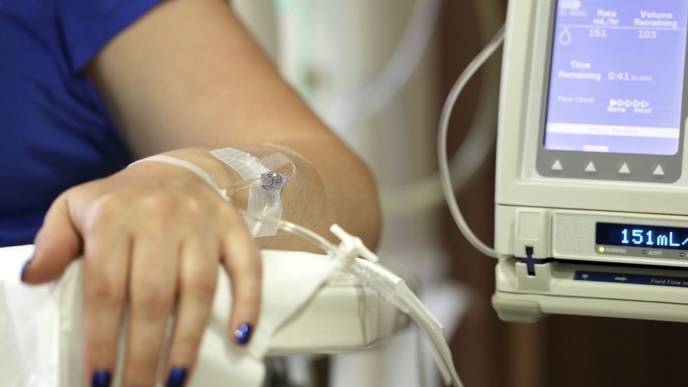Vitamin D Found to Improve Symptoms of Toxic Erythema During Chemotherapy

01/23/2023
High doses of vitamin D alleviated symptoms for patients with toxic erythema of chemotherapy (TEC) significantly faster than current treatments, according to a Northwestern Medicine study published in JAMA Dermatology.
TEC is a common side effect of chemotherapy in which patients develop severe redness, blistering and swelling, often affecting the hands, feet or areas on the body with skin folds.
For some patients, TEC symptoms are mild and eventually fades away on its own following cessation of chemotherapy, but for others, the condition persists and may worsen with subsequent chemotherapy treatment. High-potency topical steroids are generally prescribed to treat TEC, but can take up to four weeks for symptoms to significantly improve. Investigators have therefore continued to search for alternative treatment options with minimal side effects and faster results.
Previous work from Northwestern Medicine investigators demonstrated that high doses of vitamin D improved erythema in patients with severe sunburn and chemotherapy-related skin injuries, suggesting that the same results might apply in the case of TEC.
"With toxic erythema of chemotherapy, the chemotherapy causes toxic injury to skin, somewhat similarly to how UV radiation may cause direct skin injury," said Cuong Nguyen, MD, assistant professor of Dermatology in the Divisions of Dermatopathology and Medical Dermatology, of Medicine in the Division of General Internal Medicine, and lead author of the study.
In the current study, Nguyen's team evaluated six patients between the ages of 36 and 38 years with TEC who received high doses of vitamin D at an academic medical center.
Four of the patients were diagnosed with acute myeloid leukemia and one with aplastic anemia, all of whom required chemotherapy before undergoing a stem cell transplant. One patient developed TEC after receiving chemotherapy for glioblastoma.
The onset of TEC occurred about one week after patients received chemotherapy treatment, who were then given varying dosages of vitamin D.
All patients experienced improvements in pain, itchiness or swelling after one day of treatment and improvement in redness within one to four days of treatment.
In the future, Nguyen said it will be necessary to prospectively study the effects of vitamin D in the outpatient setting.
"Right now, we only know that it helps improve things temporarily in the acute setting. But we don't know if vitamin D on a more long-term basis would also be beneficial. The goal is to help improve the quality of life for patients," Nguyen said.
More information: Cuong V. Nguyen et al, High-Dose Vitamin D for the Management of Toxic Erythema of Chemotherapy in Hospitalized Patients, JAMA Dermatology (2022). DOI: 10.1001/jamadermatol.2022.5397
Citation: Vitamin D found to improve symptoms of toxic erythema during chemotherapy (2023, January 18) retrieved 18 January 2023 from https://medicalxpress.com/news/2023-01-vitamin-d-symptoms-toxic-erythema.html
This document is subject to copyright. Apart from any fair dealing for the purpose of private study or research, no part may be reproduced without the written permission. The content is provided for information purposes only.

Facebook Comments